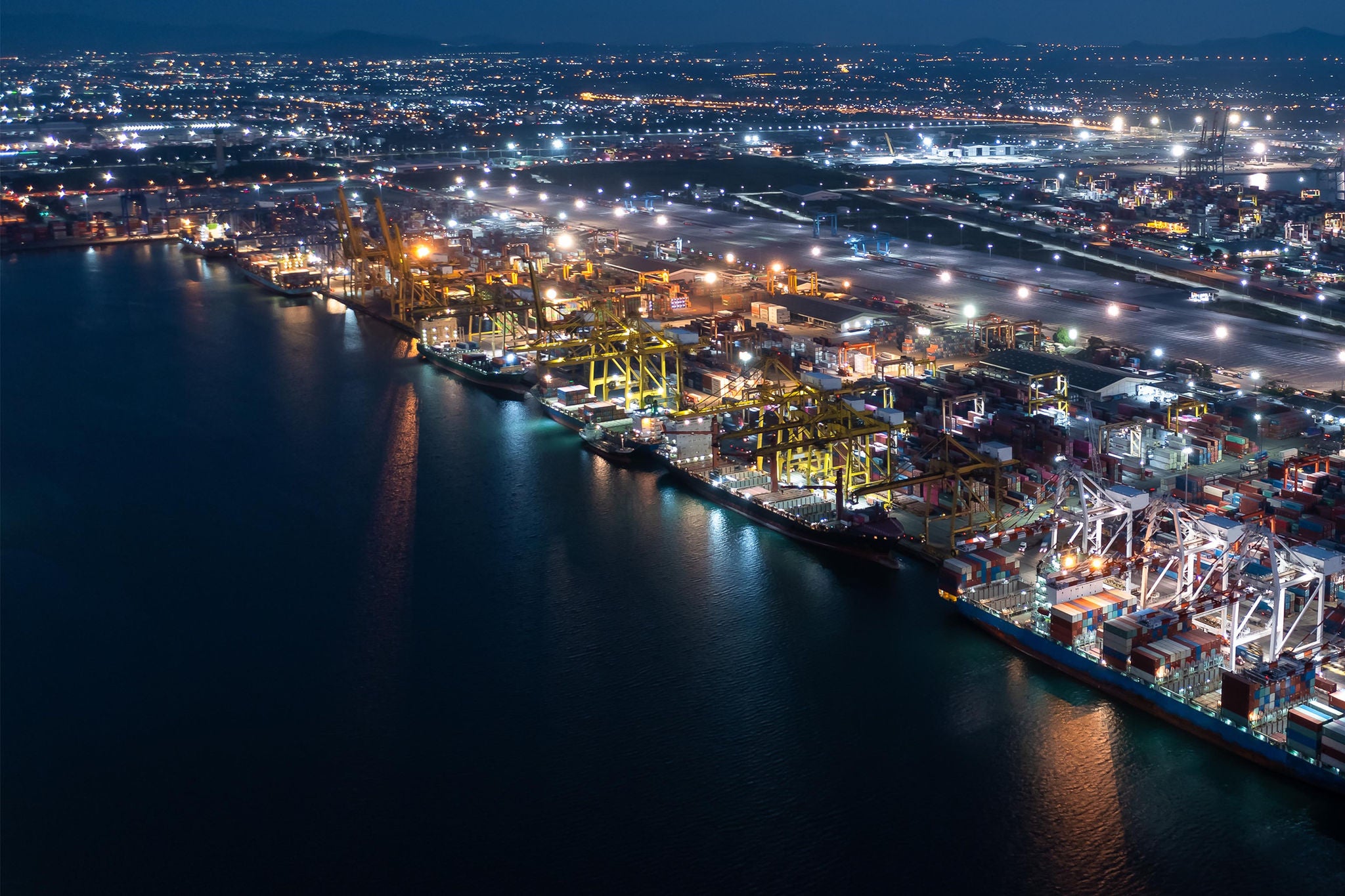EY refers to the global organization, and may refer to one or more, of the member firms of Ernst & Young Global Limited, each of which is a separate legal entity. Ernst & Young Global Limited, a UK company limited by guarantee, does not provide services to clients.

From next year, the shipping industry will need to steer a course through the new EU Emissions Trading System requirements and their financial implications. Kasia Klaczynska Lewis of EY explores key considerations for tax and finance teams.
In less than five months, the shipping industry must contend with the EU Emissions Trading System. While it’s new for the shipping sector, the EU ETS has been in place since 2005 and covers thousands of installations across Europe, in addition to some aviation activities (also to be expanded).
Starting in 2024, the EU ETS will apply to carbon dioxide emissions from ships over 5,000 gross tonnage. Since 2019, these ships have been required to monitor, report and verify their emissions and now, as part of the EU ETS, a new financial dimension needs to be considered.
Aviation and the EU ETS
The lessons learned from the inclusion of aviation in the EU ETS provided valuable insights that have guided the inclusion of maritime operations. Emissions trading was originally designed for stationary installations, and the inclusion of aviation meant different design considerations, including:
- Operations largely take place over no-man’s land of international airspace and waters.
- Business models include a variety of players involving vessel/aircraft owners, operators, managers, and charterers.
- Aviation sometimes provides the only mobility option between remote locations—which arguably warrants an exemption from the tax on emissions.
Direct at your mail
Subscribe EY newsletters
These same principles were taken into account for the design of the EU ETS maritime rules.
Affected businesses should be looking at effective preparation. As this is a new area of compliance for companies impacted, a first step is to determine which department within the organization will take on the responsibility.
Assigning Responsibility
Governments are using a variety of instruments, including taxation and incentives, to achieve sustainability objectives. The EU ETS can be seen as a charge for negative environmental externalities (emissions), like a tax of sorts.
Should the EU ETS therefore be handled by tax departments, who are increasingly navigating a wave of green taxes? Based on project experience so far, many shipping companies are turning to the tax department first, while others are opting for different approaches, with a head of legal or a chief financial officer being responsible.
Regardless of where the bulk of the ETS compliance within the organization sits, tax departments will still be affected as they will be called on to answer questions around specific tax implications of intra-group transfer of allowances, their sale, purchases, etc.
Questions around who’s responsible within the organization for complying with the EU ETS requirements reflect their multidimensional nature, which sits across various traditional professional disciplines. The complexity is illustrated through how payments for emissions are made, which is by acquisition of special allowances—European Union Allowances. These allowances can be traded in different ways—both over the counter and through dedicated exchanges such as ECX or EEX.
Navigating New Seas
The majority of installations currently covered by the EU ETS receive considerable amounts of allowances free of charge, but this is set to change from 2026 with the phase-out of free allowances. For the shipping sector, no free allocation is envisaged.
Instead, the EU ETS will be phased in, meaning initially only some emissions will be subject to compliance obligations. For 2024, this share will be 40%; for 2025, 70%; and from 2026 onward, shipping companies will pay for 100% of their reported emissions.
While the EU ETS will cover all emissions from intra-EU voyages and within EU ports, in the case of ships on voyages departing from or arriving to an EU port, 50% of the emissions are subject to the EU ETS.
For most shipping companies, the purchase and surrender of allowances might sound like an alien concept. The EU ETS is essentially a marketplace driven by supply and demand, resulting in some unpredictability regarding the underlying price of the allowances.
This feature of the EU ETS is often considered a drawback when compared to its alternative, a carbon tax. Also, unlike the relatively straightforward payment of tax, the EU ETS is a system that requires organizations to build familiarity not only with the compliance considerations but also with the market dynamics.
Complying with the EU ETS will also require organizations to address aspects of commercial and contractual relationships between different parties. EU policymakers recognize that ship emissions depend on factors often beyond the ship owner’s control, such as type of fuel, cargo carried, route, and the speed of the ship. However, unless the carbon costs are passed on to the entity operating the ship, incentives to implement operational energy efficiency measures are limited.
The EU law therefore provides that it is possible for a shipping company with responsibility for EU ETS compliance to claim reimbursement for the costs arising from the surrender of allowances from the entity directly responsible for the decisions impacting the greenhouse gas emissions of a given voyage.
A Starting Point
Addressing new EU ETS compliance obligations may fall to tax, legal, finance or other functions, or a combination. It’s important to develop a good understanding of the market forces—the EUA price triggers—in order to decide on purchase strategies (spot, futures, options) and whether to hedge the carbon price risk. These teams will also have to decide which price forecasts ring true in the short, mid and long term, considering that currently the EUAs don’t have an expiration date.
A recent stress test study by the European Central Bank concluded that by 2030, a carbon price of $300 (compared to the present circa $100) was needed to ensure global warming is limited to 1.5 degrees Celsius.
Summary
The EU ETS should also not be seen in isolation—changes are foreseen in the EU’s Energy Taxation Directive, which is another significant development on the horizon. Other EU initiatives as part of the European Green Deal such as the Renewable Energy Directive and FuelEU Maritime and Alternative Fuels Infrastructure Regulations should also be kept on the radar.
Reproduced with permission. First published on 24 August 2023. Copyright 2023. The Bureau of National Affairs, Inc. (800-372-1033) Bloomberg Industry Group
Contact
EY’s European Green Deal Center of Excellence
Because the European Green Deal is not a monolithic concept, the traditional lines between energy, finance, corporate governance and environment fade, requiring a multidisciplinary approach. Our Center of Excellence is a focal point of contact around the EGD measures and offers a full suite of solutions that can help clients navigate their regulatory complexities.
EY Center for Climate Policy
EY Center for Climate Policy (EY CCP) is an international expert hub that works with sovereigns helping them design climate policies, with corporates in need of understanding how these shifting policies will impact their business, and with developers looking to build high-quality offsetting projects.
Related articles
Updated version of CBAM Regulation unveiled
On 25 January 2023 updated wording of Carbon Border Adjustment Mechanism (CBAM) Regulation was published.
EY Report: The future of cybersecurity in Europe. Challenges related to the NIS2 Directive.
Take a look at EY Report: The future of cybersecurity in Europe. The challenges related to the NIS2 Directive







